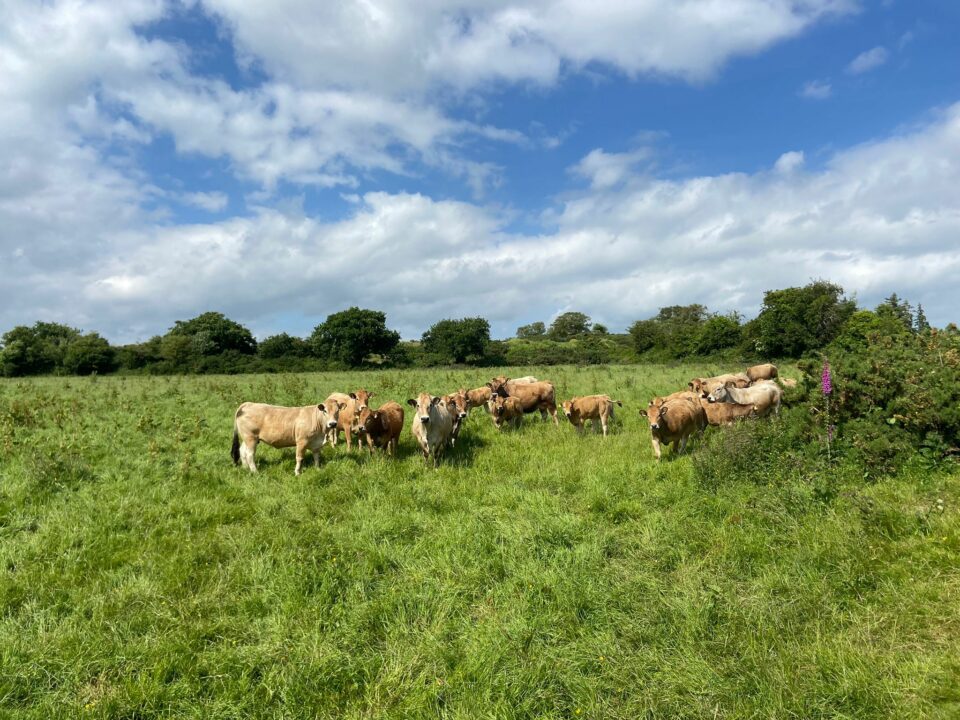
The industry and local breeds project
6 December 2023
AI, embryos, YPERIOS crossbreeding, hornless: the quest for genetic progress with AURIVA-Elevage
11 December 2023Our advice on rearing YPERIOS calves
A demanding approach to progress
By optimizing a few of your daily practices, and with these few tips, get the most out of your YPERIOS crossbred calves.
Already easy to rear, and with care similar to that of your replacement females, maximize the potential of your YPERIOS calves to boost your income. Tarification, calving care, colostrum, housing, lactation phase, AURIVA-Elevage reviews a few tips for perfectly healthy calves.
"The YPERIOS board
If you have the opportunity, don’t hesitate to keep your YPERIOS crossbred calves a few days or 1 week longer in the rearing facility. YPERIOS calves are easy to birth, and reveal their full growth and conformation potential at 3 or 4 weeks. With no time-consuming or special care other than adjusting milk delivery quantities, these extra days will enable you to optimize your crossbred calf sales.
DRY-OFF AND CALVING
After recruitment at weaning, the young males are monitored at the La Borie station for 5 months. Raised under homogeneous housing and feeding conditions, their growth performance is measured monthly and their morphology is assessed at the end of the period. Weighing, scoring and measuring are used to calculate station indexes, the summary of which is called IMOCR.

POWER SUPPLY
Typically, make sure you provide forage, a mineral supplement (bolus type), a slightly acidic ration and stop using legumes. In transition to calving bring 1/3 of the cow’s ration + hay

VACCINATION
To promote immunity transfer and avoid rota and coronavirus in particular

CORD CARE
Disinfect the umbilical cord with a 5% iodine solution, and repeat for 2 or 3 days.
POWER SUPPLY
Calving: colostrum
Rich in nutrients and antibodies, colostrum is essential for providing energy and transmitting immunity from cow to calf. It will be all the more effective if it comes from :
- From 1st milking
- From 2nd, 3rd or 4th lactation
- A cow that has been dry for at least 40 days
- A cow that has been present for at least 1 season and has no mastitis-type pathology
- From the mother of the calf in question
For optimal colostrum efficiency, two key points are essential:
► DISTRIBUTION WITH THE 3Q RULE
- QUICKLY: The calf must ingest colostrum within 2 hours of birth and again within 6 hours.
- QUANTITY: The calf must ingest at least 2L of colostrum within 2 hours of calving.
- QUALITY: Colostrum of sufficient quality should have at least 20% BRIX (to be measured with a refractometer or colostrum scale).
► CONSERVATION
- REFRIGERATOR ❄️: Between 1 and 2°C maximum for 1 week
- FREEZER ❄️❄️❄️: Maximum 1 year with slow thawing in a bain-marie (50°C). So opt for freezer bags rather than a bottle, which would make bain-marie difficult.
During the lactation phase
The main advice here is to adapt milk quantities to the animal’s weight. Indeed, with 1Kg of GMQ as the growth target, the differences between purebred and crossbred calves can be significant. To accompany this important growth of YPERIOS calves between 0 and 3 or 4 weeks and deliver the heaviest possible product to your buyers, here is your dashboard:

► FOR THE MOST EFFICIENT FEEDING POSSIBLE, CONSIDER :
- Dispense milk heated to 40°C using a milk heater.
- Offer 2 meals a day at regular times and with clean equipment.
- Mix milk from several cows (to avoid variations in fat content) before distribution.
- Prefer Milk Bar teats (esophageal gutter closure and sucking reflexes): greater salivation leads to better digestion.
- Rehydrate the calf in the event of diarrhoea, leaving clay available.
- Self-service water year-round
CALF HOUSING AND CARE
The calves
AN INDIVIDUAL BOX
the first two weeks to limit health risks
IN A GROUP BOX
from 10 days, with collective feeding bottles to simplify work. Make sure there is 1.5m² per calf to limit contamination and promote animal welfare.
SHEARING THE BACK LINE
For the comfort of calves in winter, especially fat calves, remember to trim the back line to avoid the “wet sweater” effect and prevent them from catching cold. Ideally, from the shoulders to the base of the tail, 10 to 25 cm wide.
Ambient conditions
TEMPERATURE
Between 7 and 25°C.
Straw and calf coats are insulating but not warming
VENTILATION
This is a key point. We generally recommend an air speed of 0.25 m/s and a maximum humidity level of 50%.
Avoid the risk of contamination
CLEANLINESS
The risk of outside contamination must be limited by ensuring that outside workers are clean (foot bath, clean overalls, etc.).
SANITARY VACUUM
Ideally, 2 weeks between each calving will help to limit contamination (by cleaning, disinfecting or even moving outside stalls).





